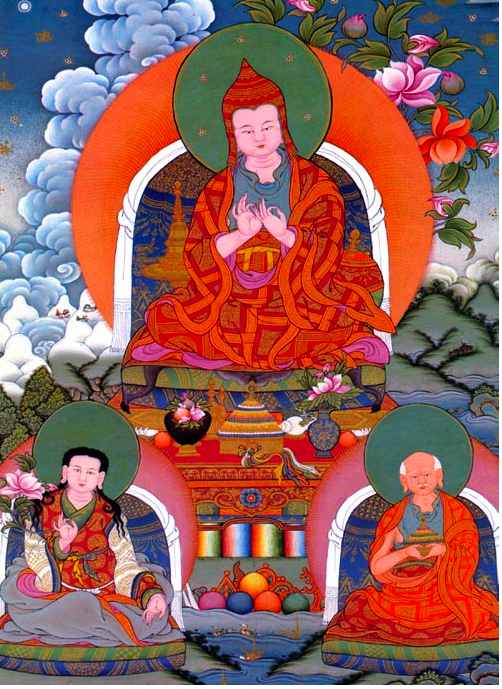Everyday Buddhadharma
Working with Slogans.
> By Linda V. Lewis
Atisha, like Buddha, knew that patience is a powerful way to transform difficult circumstances into the path of Enlightenment. Ordinary patience implies the bearing of solid pains or problems by a solid self. But he was not referring to ordinary patience—rather, Atisha was referring to the paramita or perfection of patience.
The paramita of patience is saturated in the knowledge of impermanent phenomena and selflessness, which not only makes trials and tribulations easier to bear, but makes them transparent opportunities to wake up.
My friend Tommy exemplifies this. His cancer is advancing rapidly, but he tells his wife, “I’m okay. I’m looking forward to this next adventure.”
This attitude helps him deal with the daily process of dying without clinging to life, and enables everyone around him to see life and death in this uplifted way. There is no martyrdom. Tommy’s patience is like a dignified suit of armor.
Patience paramita is not like waiting for a bus, twiddling fingers while waiting for something to happen. It’s being steadily present.
~~~
There are always things to deal with—health issues, complaints, environmental and economic situations. So how do we respond to difficulties without reacting impulsively or with bitterness and blame?
To develop the paramita of patience, Atisha encourages us to contemplate the slogan, “When the world is filled with evil, all mishaps should be transformed into the path of bodhi.”
Atisha is reminding us to transform seeming evil into the path of bodhi or wakefulness. And we do so with the paramita of patience.
~~~
First, we meditate and perhaps do tonglen (as described in the previous article). In meditating we sit through our discursive or wandering mind until we settle and open to basic being. If we include tonglen, we take in negativity and give out goodness, peace, and kindness. This combination of meditation and tonglen is the best preparation for post-meditation.
Then, with the meditative glimpse and understanding of selflessness, we are less hypersensitive and touchy. And with the experience and conviction of impermanence, obstacles in our life become more flexible and workable.
Finally, as we conduct ourselves with inner calm, we are not so easily disturbed, we are not provoked to anger, nor do we give in to aggression. We might be surprised or even irritated by an angry remark or complaint…but we do not give back in kind. Being surprised or irritated is wakeful. But by not adding to the field of aggression, we can look further into the face of anger and see behind the mask a person troubled. Then, instead of self-justification, we may feel empathy and find the words of kindness. Patience paramita allows that confidence and resourcefulness to arise and find the right words.
There is the famous story of Atisha and his Bengali tea boy that illustrates this. Toward the end of his life Atisha was invited to teach Dharma in Tibet and he heard that Tibetans were very kind-hearted. Not wanting to forgo his practice of patience, Atisha decided that his irascible tea boy should accompany him to the Land of Snows. Of course, as soon as he arrived, Atisha discovered that Tibetans, like all people, were afflicted with passion, aggression, and ignorance and that he soon had plenty of opportunity to practice patience independent of his hot-tempered side-kick!
Because there will always be difficulties and obstacles, the practice of patience paramita is unending. But from a practitioners’ point of view, that is good news.
~L.V.L











Read 4 comments and reply